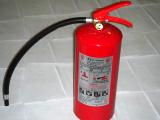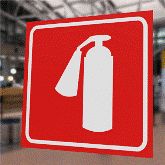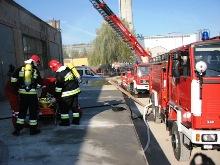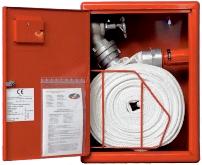Causes of fires in electrical devices
 Electrical device — a set of interconnected electrical products that are in structural and (or) functional unity, designed to perform a specific function for the production or transformation, transmission, distribution or consumption of electrical energy (GOST 18311-80).
Electrical device — a set of interconnected electrical products that are in structural and (or) functional unity, designed to perform a specific function for the production or transformation, transmission, distribution or consumption of electrical energy (GOST 18311-80).
Electrical devices can be grouped according to the most essential characteristics: design, electrical characteristics, functional purpose. Six main groups of electrical installations cover almost the entire variety of electrical devices used in practice.
These are wires and cables, electric motors, generators and transformers, lighting equipment, distribution devices, electrical devices for starting, switching, control, protection, electric heating devices, apparatus, installations, electronic equipment, computers.
Causes of wire and cable fires
1. Overheating from a short circuit between wires and cable cores, their cores and ground as a result of:
- breakdown of insulation with increased voltage, including from lightning surges;
- destruction of the insulation at the place of formation of microcracks as a factory defect;
- destruction of the insulation at the place of mechanical damage during operation;
- breakdown of insulation from aging; destruction of the insulation at the place of local external or internal overheating; destruction of the insulation in a place with a local increase in humidity or the aggressiveness of the environment;
- accidentally connecting conductive wires of cables and wires to each other or connecting conductive wires to ground;
- intentionally connecting the conductors of the cable and conductors to each other or grounding them.
2. Overheating from overcurrent as a result of:
- connecting a high power user;
- the appearance of significant leakage currents between current-carrying conductors, current-carrying conductors and the ground (body), including the distribution devices due to a decrease in the amount of electrical insulation;
- increase in ambient temperature in the area or in one place, deterioration of heat dissipation, ventilation.
3. Overheating of transition joints as a result of:
- weakening of the contact pressure at the place of the existing connection of two or more conductive wires, which leads to a significant increase in the contact resistance;
- oxidation at the site of the existing junction of two or more conductors, leading to a significant increase in contact resistance.
Analysis of these causes shows that, for example, a short circuit in electrical wires is not the main cause of ignition, especially fires.This is a consequence of at least eight primary physical phenomena that lead to an immediate reduction in insulation resistance between conducting wires of different potentials. It is these phenomena that should be considered primary causes of fire, the study of which is of scientific and practical interest.
Below is a classification of the causes of fires in other electrical devices.
Causes of ignition of electric motors, generators and transformerv
 1. Overheating from a short circuit in the windings as a result of damage from a turn in electrical insulation:
1. Overheating from a short circuit in the windings as a result of damage from a turn in electrical insulation:
- in one winding with increased voltage;
- at the place of formation of microcracks as a factory defect;
- from aging;
- from exposure to moisture or an aggressive environment;
- from the effects of local external or internal overheating;
- from mechanical damage;
2. Overheating from a short circuit to the housing as a result of damage to the electrical insulation of the windings:
- increased tension;
- from aging of electrical insulation;
- destruction of the electrical insulation of the windings to the body from mechanical damage to the electrical insulation;
- from exposure to moisture or an aggressive environment;
- from external or internal overheating.
3. Overheating from current overload of windings is possible as a result of:
- overestimation of the mechanical load on the shaft;
- operation of a three-phase motor in two phases;
- stopping the rotor in bearings from mechanical wear and lack of lubrication;
- increased supply voltage;
- continuous continuous operation at maximum load;
- disturbances in ventilation (cooling);
- overestimated on and off frequency;
- overestimated turning frequency of electric motors;
- violation of the start-up mode (lack of damping resistances at start-up).
4. Overheating from sparks in slip rings and collector as a result of:
- wear of sliding rings, collector and brushes, which leads to a weakening of the contact pressure;
- contamination, oxidation of slip rings, collector;
- mechanical damage to slip rings, collectors and brushes;
- violations of the places of installation of current collection elements on the collector;
- shaft overload (for electric motors);
- current overload in the generator circuit;
- closing of collector plates due to the formation of conductive bridges on coal and copper dust.
Causes of fires in switchgear, electrical starting, switching, control, protection devices
 1. Overheating of the electromagnet winding from a short circuit interruption as a result of insulation damage:
1. Overheating of the electromagnet winding from a short circuit interruption as a result of insulation damage:
- increased tension;
- at the place of formation of microcracks as a factory defect;
- at the place of mechanical damage during work;
- from aging;
- at the site of local external overheating from sparking contacts;
- when exposed to high humidity or aggressive environments.
2. Overheating from current overload in the electromagnet coil as a result of:
- increased supply voltage of the electromagnet coil;
- long open state of the magnetic system when the coil is energized;
- periodic insufficient pulling of the moving part of the core until the magnetic system closes in case of mechanical damage to the structural elements of the devices;
- increased frequency (number) of inclusions — shutdown.
3.Overheating of structural elements as a result of:
- weakening of the contact pressure in the places of connection of conductive wires, which leads to a significant increase in the contact resistance;
- oxidation in the places of connection of conductive wires and elements, which leads to a significant increase in transient resistance;
- sparking of the working contacts during wear of the contact surfaces, which leads to an increase in the resistance of the contact transition;
- sparking of working contacts during oxidation of contact surfaces and an increase in transient contact resistance;
- sparking of working contacts when the contact surfaces are distorted, which leads to an increase in contact resistance at the contact points;
- strong sparking of normal working contacts when removing spark or arc extinguishing devices;
- sparks during electrical breakdown of wires on the housing, reduction of electrical insulation qualities of structural elements from local exposure to moisture, contamination, aging.
4. Lighting from fuses as a result of:
- heating in the places of working contacts from a decrease in contact pressure and an increase in transient resistance;
- heating of places of working contacts from oxidation of the contact surfaces and increase in transient resistance; flying out of molten metal particles of the fuse when the fuse housing is destroyed, caused by the use of non-standard fuses ("bugs");
- flying molten metal particles on non-standard open fuses.
Causes of fires in electric heaters, devices, installations
 1.Overheating of devices, apparatus, installations from short-circuiting of electric heating elements as a result of:
1.Overheating of devices, apparatus, installations from short-circuiting of electric heating elements as a result of:
- destruction of the electrical insulation of structural elements from aging;
- destruction of electrical insulation elements from external mechanical impact;
- layering of conductive contamination between conductive structural elements;
- accidentally hitting conductive objects and short-circuiting current electric heating elements;
- weakening of the contact pressure at the connection points of conductive wires, elements, which leads to a significant increase in the resistance of the transition;
- oxidation at the connection points of the current-carrying wires of the elements, which leads to a significant increase in the transient resistance;
- destruction of the electrical insulation of structural elements through increased supply voltage;
- leakage of heated water (liquid), which leads to deformation of structural elements, short circuit of electric current and destruction of the structure of the heater as a whole.
2. Lighting from electric heating devices, devices, installations as a result of:
- contact of combustible materials (objects) with heating surfaces of electric heating devices, devices, installations;
- thermal irradiation of combustible materials (objects) from electric heating devices, devices, installations.
Causes of component ignition
Short-circuit overheating due to:
- electrical breakdown of the dielectric in the structure of the constituent element, leading to overcurrent;
- reduction of electrical insulation properties of construction materials from aging;
- deterioration of heat dissipation due to improper installation and (or) operation;
- increased power dissipation due to electrical mode changes in case of failure of «adjacent» components;
- the formation of electrical circuits that are not foreseen by the project.
